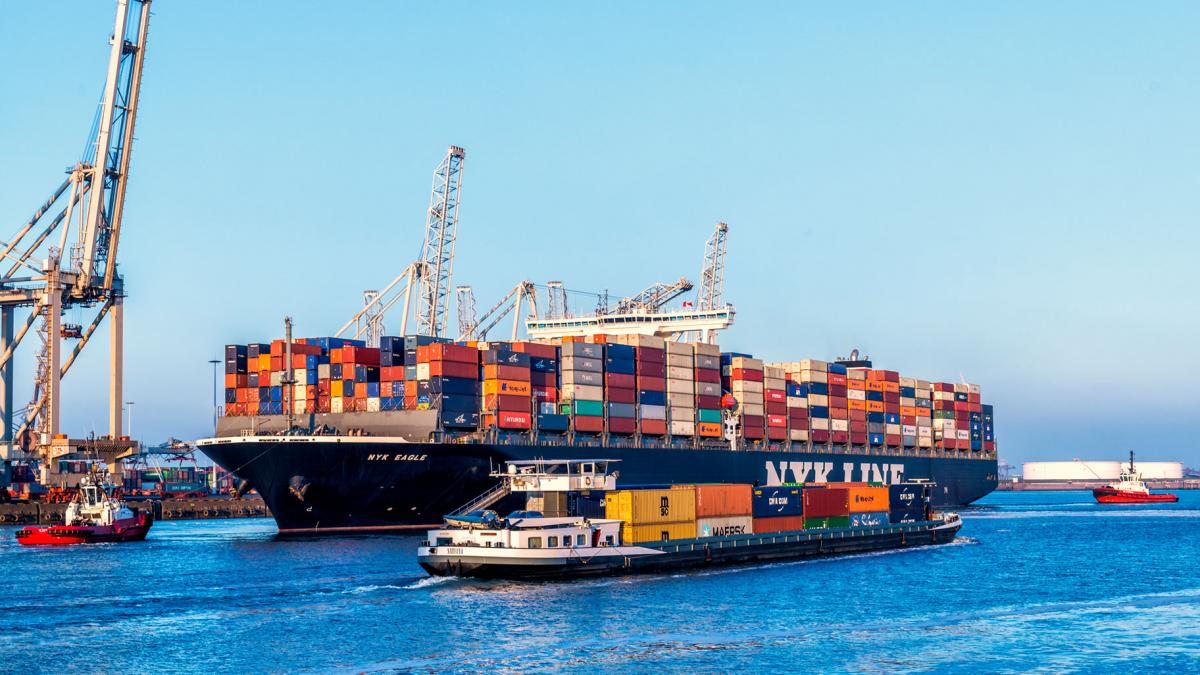The Role of Technology and Innovation in Addressing the Trade Gap 2023

The Role of Technology and Innovation in Addressing the Trade Gap 2023
According to the Ministry of Commerce and Industry, the difference between exports and imports widened to $22.12 billion in May, the most in the previous five months. This is greater than the projections made by the Bloomberg poll, which called for a $16.5 billion shortfall vs a $15.24 billion gap in April.

The latest data released by the national statistics office revealed that the May trade gap widened significantly, driven by resilient domestic demand and weak global economic conditions. Economists have analyzed the numbers and projected the current account deficit (CAD) for the fiscal year 2024 to be around 1.2-1.3% of the Gross Domestic Product (GDP).

According to experts and economists, India’s trade deficit grew in May 2023 after narrowing to almost a two-year low in April due to strong local and declining global demand. As imports increased sequentially and exports were unchanged in May 2023, “relatively resilient domestic demand and weakening global demand drove the trade deficit to a five-month high, ” according to Elara Capital economist Garima Kapoorital. According to the Ministry of Commerce and Industry, the difference between exports and imports widened to $22.12 billion in May, the most in the previous five months. This is greater than the projections made by the Bloomberg poll, which called for a $16.5 billion shortfall vs a $15.24 billion gap in April.

The widening trade gap is a result of a combination of factors. Firstly, the domestic economy has displayed remarkable resilience despite global challenges. The country’s demand for goods and services has remained strong, fueled by a robust labour market, increased consumer spending, and favourable monetary policies. This has led to increased imports, putting pressure on the trade balance.

The estimated total exports of goods and services from India in May 2023 are expected to total $60.29 billion, representing a contraction of (-)5.99% over May 2022, while the estimated total imports for the same month are expected to total $70.64 billion, representing a contraction of (-)7.45% over May 2022. In May, India’s exports of goods decreased 10.3% to $34.98 billion, while its imports declined 6.6% to $57.1 billion. Compared to April through May of 2022, the predicted merchandise trade deficit 2023 was $37.26 billion instead of $40.48 billion. The expected value of services imports was $13.53 billion, down from $15.20 billion in May 2022, and the estimated value of services exports was $25.30 billion, up from $25.13 billion.

Secondly, the global economic landscape has been less favourable, marked by weak demand from major trading partners. The ongoing trade tensions between major economies and geopolitical uncertainties have hampered global trade flows. Reduced need for exports has affected various sectors, contributing to the widening trade deficit.
Economists have closely analyzed the data and offered projections for the current account deficit for the fiscal year 2024. They estimate that the CAD will range between 1.2% and 1.3% of the GDP. This projection considers various factors, including the domestic economic outlook, global demand conditions, and government policies.
It is worth noting that a current account deficit is not necessarily a negative indicator for an economy. It can be a sign of economic vitality and investment attractiveness. A deficit indicates that a country imports more goods and services than it exports, suggesting it can meet domestic demand and invest in productive assets. However, a sustained and excessively large deficit can pose risks, such as currency depreciation and potential debt burdens.

While falling commodity prices caused a 6.6% YoY decline in product imports in May 2023, specific vital categories, including iron and steel, machine tools, equipment, electronic goods, fertilizers, and pharmaceuticals, witnessed a YoY expansion, leading to a sequential rise in overall imports, taking the merchandise trade deficit to a five-month high of $22.1 billion in that month from $15.1 billion in April 2023,” said Aditi Nayar, Chief Economist and Head Research and Statistics. She said that compared to April, May typically has more significant imports of several goods, including gasoline, gold, and fertilizer.
To address the trade gap and ensure sustainable economic growth, policymakers must focus on a balanced approach. This may involve boosting export competitiveness, attracting foreign investment, and diversifying the economy. Additionally, efforts to improve productivity, promote innovation, and enhance trade relationships with traditional and emerging markets could contribute to narrowing the deficit over time.

In May 2023, compared to the same month the previous year, 13 of the 30 essential industries for merchandise exports showed positive development, according to a statement from the ministry. The following are some of them: Electronic Goods (73.96%), Other Cereals (67.96%), Oil Meals (52.91%), Spices (49.84%), Iron Ore (48.26%), Oil Seeds (25.02%), Fruits & Vegetables (19.91%), Ceramic Products & Glassware (17.36%), Rice (14.27%), Tea (8.81%), Cashew (2.81%), Coffee (1.71%), and Drugs & Pharmaceuticals (0.78%).
Suman Banerjee, CIO of Hedonova, added that India had shipped consumer items worth about $2 billion for which it had yet to be paid. This is why exports were down. Due to a recent treaty, Russia is paying for Western sanctions via letters of credit rather than cash payments, which typically materialize after 90 days. These sanctions imposed by the West currently plague Russia. The next quarter’s export deficit will be seen. According to Suman Banerjee, the rupee’s weakness versus the dollar is another reason imports were down.
The trade dynamics of a country are greatly influenced by government policies. Policymakers must maintain a favourable business environment, invest in infrastructure, and create supportive trade policies that encourage exports and imports. By adopting a proactive and strategic approach, countries can mitigate the impact of external shocks and capitalize on opportunities in the global market.
In conclusion, the widening trade gap in May reflects resilient domestic demand and weak global economic conditions. Economists have projected the current account deficit for the fiscal year 2024 to be around 1.2-1.3% of GDP. While a current account deficit can indicate economic vitality, policymakers should strive for a balanced approach to address the gap and promote sustainable growth. Countries can navigate challenging times by implementing appropriate policies and positioning themselves for long-term economic prosperity.




